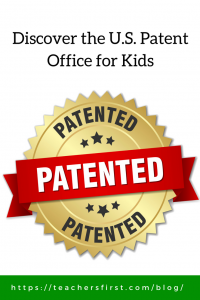 Did you know that many of the very first government departments, established by our first President, George Washington, remain in place today? On April 10, 1790, just under a year after his inauguration, President Washington signed a bill placing the foundation for our current patent system. This law, for the first time, gave the rights to inventors to their creations. This year the patent office celebrates 228 years of operation and oversight of the patent process.
Did you know that many of the very first government departments, established by our first President, George Washington, remain in place today? On April 10, 1790, just under a year after his inauguration, President Washington signed a bill placing the foundation for our current patent system. This law, for the first time, gave the rights to inventors to their creations. This year the patent office celebrates 228 years of operation and oversight of the patent process.
In its first year, the new patent office issued three patents. The first was for processing potash and pearl ash given to Samuel Hopkins. This process offered new solutions for making glass, soap, and fertilizer. Joseph Samuelson from Boston received the next patent for the continuous wick, an innovation to creating long lasting candles. The third patent issued in 1790 was for an automated flour mill designed by Oliver Evans. Since that time, the annual number of patent applications and granted patents has increased every year; in fact, this summer the patent office expects to issue its 10 millionth utility patent.
The U.S. Patent and Trade Office offers a website just for kids and teens. This site features a large variety of resources including videos, activities, and biographies of young inventors. Here are some of the highlights:
- 10 Million Patents – scroll through a timeline of patents throughout history featuring important inventors, patent designs, and interesting facts over time. Did you know William Thornton persuaded the British not to burn the patent office during the burning of Washington by arguing that the information contained in the office was useful to all of mankind?
- Select the kid’s portion of the site to find the Build an Invention activities. Choose from medium or expert level to build or spot different inventions.
- Learn about the cycle of an invention within the section for teens. This cycle demonstrates the steps to take when creating a solution to a problem and determining if it is worthy of a patent application.
- Be sure to visit the section for parents and educators divided into categories for elementary, middle, and high school grade levels. The elementary and middle school portions feature hands-on activities for creating a paper rocket and mechanical grasper. Information for high school students focuses on career options and stories of innovators.
Here are some additional resources for teaching students about inventions and patents:
- This article by Robin Koontz outlines the process for considering and applying for a utility patent. The author shares wonderful ideas for thinking through the design process and the three main steps for writing a patent application. This article is perfect to share with student innovators to help them understand that inventions don’t have to be something huge like a space shuttle, inventions just need to be a unique solution to any situation.
- A Young Inventor’s Guide to Trademarks and Patents shares many resources for learning about inventions and patents. Divided into three sections, this guide shares links to learning about Famous Inventors and Inventions, Inventions for Kids, and Protecting Your Inventions.
- Inventive Kids is an amazing site for kids to learn about their creative potential. Use this site to learn more about invention, innovation, and kid inventors.
With the increasing popularity of Makerspaces and Design Thinking in classrooms, these resources provide excellent starting points for encouraging students to learn about the real-world applications of their inventions and the process involved in patenting design. Take a look at some of our previous TeachersFirst blogs on Design Thinking and Kid Inventor’s Day to find many applications for using this site in your classroom.
What have your classroom inventors designed? Have they gone through the patent process? We would love to hear about your kid innovators and classroom activities in the comments below.

